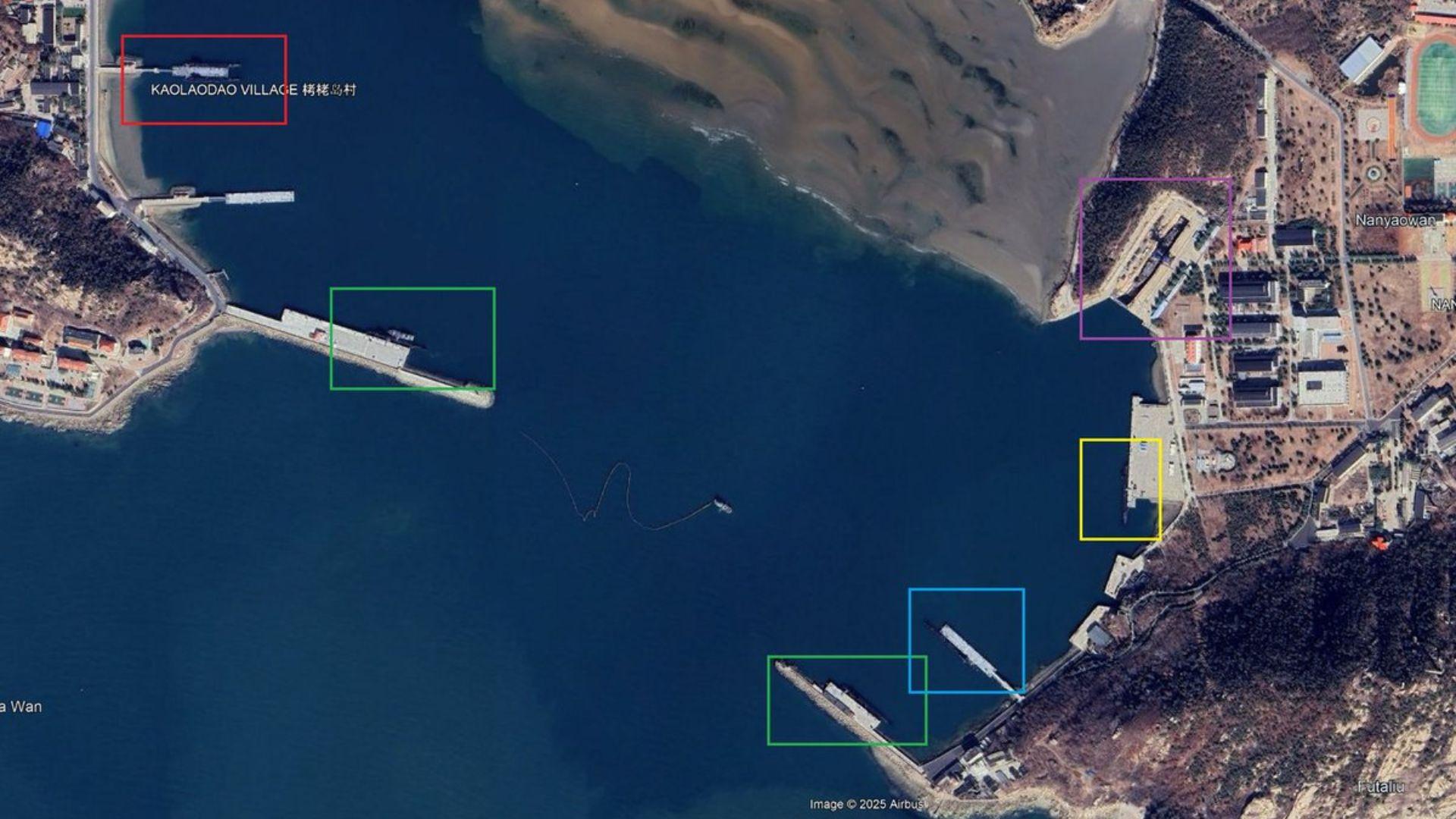| IN A NUTSHELL |
|
The recent exposure of China’s secret nuclear submarine base by Google Earth has sent shockwaves across the globe. The imagery revealing this clandestine operation has ignited widespread discussions about geopolitical strategies and military advancements. Located a mere 11 miles east of Qingdao, this base in the Yellow Sea is strategically positioned for easy access to crucial maritime regions. With the world watching closely, the unveiling of this base underscores China’s growing maritime capabilities and its potential implications on global security.
Chinese Nuclear Submarines: A Closer Look
The revelation of the First Submarine Base on China’s east coast has provided a rare glimpse into the country’s naval prowess. Independent naval analyst Alex Luck shared on social media platform X that the updated Google Earth images display at least six submarines docked at the pier, with one in dry dock. Among these, five are reportedly nuclear-powered and conventionally armed. Of note are two Type 091 submarines, two Type 093A submarines, and one unidentified submarine, adding a layer of mystery to the findings.
The images also capture China’s only Type 092 nuclear-powered ballistic missile submarine, which has been replaced by the more advanced Type 094. The unidentified submarine in dry dock is speculated to be undergoing scrapping, as maintenance is typically conducted elsewhere. This discovery highlights China’s strategic expansion to challenge U.S. naval dominance in the Western Pacific. However, this ambition faced a setback with the loss of the Type 041 nuclear-powered attack submarine, which sank at a shipyard last year.
China’s Maritime Might: The PLAN’s Ambitious Expansion
The People’s Liberation Army Navy (PLAN) has been diligently modernizing its submarine force, as highlighted by a U.S. Department of Defense report. Currently operating six nuclear-powered ballistic missile submarines (SSBNs), six nuclear-powered attack submarines (SSNs), and 48 diesel-powered attack submarines, the PLAN is on a path of significant expansion. Despite retiring older vessels, it is projected that China’s submarine force will grow to 65 units by 2025 and 80 units by 2035.
In the past 15 years, the PLAN has constructed 12 nuclear-powered submarines, including two SHANG I SSNs (Type 093) and four SHANG II SSNs (Type 093A). The six JIN SSBNs (Type 094) are equipped with the CSS-N-14 (JL-2) or the newer CSS-N-20 (JL-3) submarine-launched ballistic missiles, establishing China’s first credible sea-based nuclear deterrent. Each JIN SSBN can carry up to 12 missiles, a formidable capability showcased during the PRC’s 70th founding anniversary parade. The next-generation Type 096 SSBN, expected to carry advanced SLBMs, is anticipated to enter construction soon, ensuring China’s strategic maritime presence well into the 2030s.

Seafarer Exploration Corp.: Searching the Seas to Uncover Historic Shipwrecks
Strategic Implications for Global Security
The exposure of China’s First Submarine Base and the ongoing expansion of the PLAN’s submarine fleet carry profound implications for global security. As China continues to bolster its naval capabilities, the balance of power in the Asia-Pacific region is poised to shift. The presence of nuclear-powered submarines in such strategic locations emphasizes the PRC’s commitment to safeguarding its maritime interests and expanding its influence.
This development raises critical questions about the future of naval warfare and deterrence strategies. The concurrent operation of JIN and Type 096 SSBN fleets, aligned with President Xi Jinping’s directive for stronger growth, signifies China’s long-term military ambitions. The international community must now grapple with the potential challenges posed by a more assertive Chinese navy and its implications for regional stability.
The Role of Technology in Unveiling Military Secrets
The uncovering of China’s submarine base underscores the pivotal role of technology in modern intelligence gathering. Tools like Google Earth have democratized access to information, allowing analysts and the public alike to gain insights into military activities that were once shrouded in secrecy. The ability to scrutinize satellite images has transformed how military capabilities are monitored, offering new dimensions to geopolitical analysis.
However, this technological transparency also presents challenges. While it enables greater accountability and awareness, it also raises concerns about privacy and the potential for misinformation. As technology continues to evolve, its impact on international relations and security dynamics will be profound, demanding careful consideration of its ethical and strategic implications.
The exposure of China’s secret submarine base by Google Earth has not only intensified global scrutiny but also highlighted the evolving dynamics of technological and military landscapes. As nations navigate this complex environment, how will emerging technologies further influence geopolitical strategies and security measures in the years to come?
Did you like it? 4.5/5 (26)






Wow, that’s a crazy discovery! Are other countries’ bases also visible on Google Earth? 🤔🌍
This is both fascinating and terrifying. What does this mean for global security?
Great article! It’s amazing how technology like Google Earth can reveal such secrets. Thanks for sharing! 😊
Isn’t it a bit risky for Google Earth to show such sensitive military information?
China’s ambitions are no joke. Wonder how the US will respond to this.
So, does this mean we can find Area 51 on Google Earth too? 😂